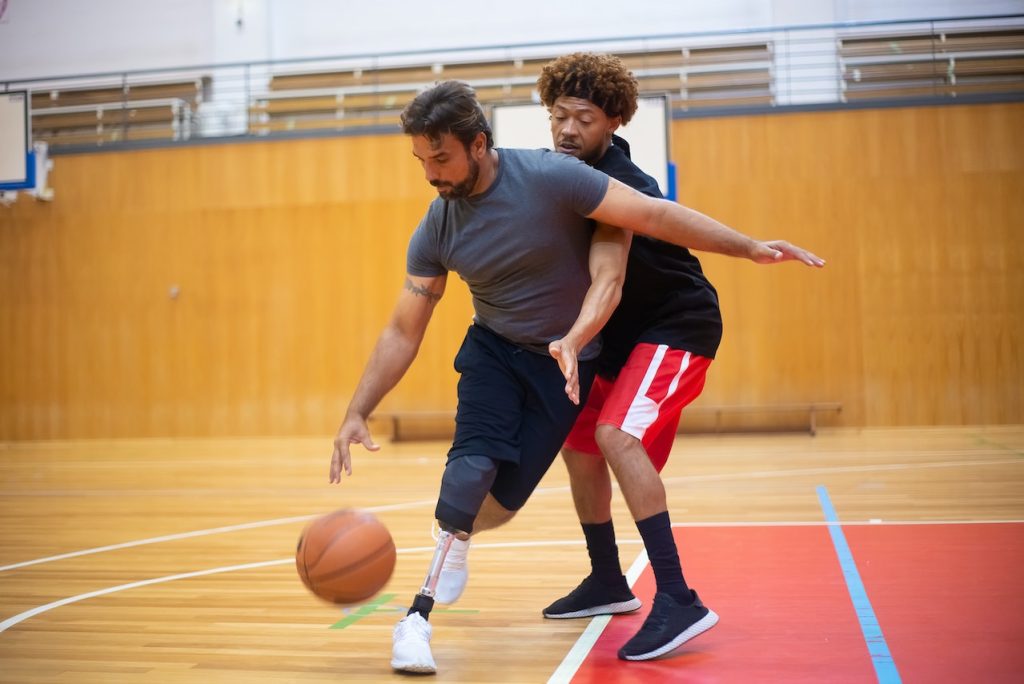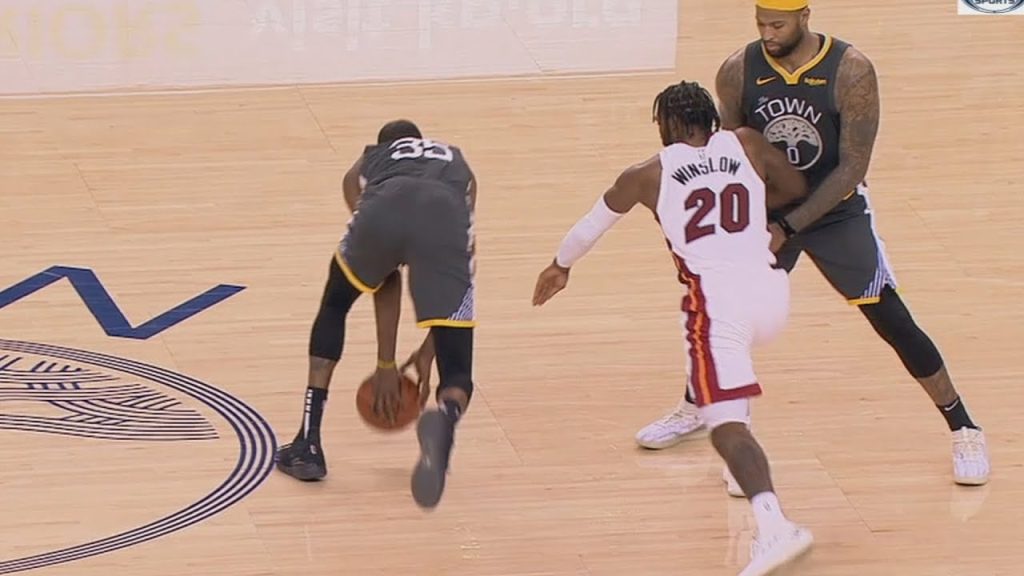Introduction
Double dribbling is a term that every basketball player, coach, and fan is familiar with. It refers to an infraction that occurs when a player dribbles the ball, stops, and then starts dribbling again, or when both hands make contact with the ball simultaneously during a dribble. This violation is one of the fundamental rules of basketball, and understanding it is crucial for players at all levels of the game. In this blog post, we will delve into the intricacies of double dribbling, including its definition, how it is called, its implications in gameplay, and how players can avoid committing this violation.
At its core, double dribbling is an illegal action that disrupts the flow of the game. According to the official basketball rules, a player who has stopped dribbling cannot begin dribbling again unless another player has touched the ball. This rule is in place to maintain fairness and fluidity in the game, preventing players from gaining an undue advantage by restarting their dribble after pausing. The violation can occur in various ways, and it is essential for players to be aware of these scenarios to avoid losing possession of the ball.

How Double Dribbling Is Called?
Referees are tasked with enforcing the rules of basketball, including calling double dribbling violations. When a player commits this infraction, the referee will blow their whistle and signal the violation. Typically, this is accompanied by a hand gesture that indicates the player has violated the dribbling rule. Once a double dribble is called, the opposing team is awarded possession of the ball. The timing and manner in which a referee calls a double dribble can vary based on the specific circumstances of the game and the referee’s discretion. However, referees are trained to recognize double dribbling quickly and accurately to maintain the integrity of the game.
Implications Of Double Dribbling In Gameplay
The implications of double dribbling extend beyond merely losing possession of the ball. For the team that commits the violation, it can be a momentum-shifting moment. Turning the ball over due to a double dribble can lead to fast breaks and scoring opportunities for the opposing team. This can increase the pressure on the offending team, especially in closely contested games where every possession counts. Coaches often emphasize the importance of maintaining ball control and being aware of dribbling rules to minimize the risk of double dribbling and the negative consequences that follow.
Moreover, double dribbling can also affect the psychological aspect of the game. Players who commit this violation may experience frustration or embarrassment, particularly if it occurs during a critical moment. This emotional response can impact their performance in subsequent plays. Coaches often address this aspect, encouraging players to focus on their technique and decision-making skills to reduce the likelihood of committing double dribbling violations.
Techniques To Avoid Double Dribbling
To prevent double dribbling, players should focus on improving their ball-handling skills and decision-making abilities. One essential technique is to practice dribbling with one hand while maintaining control of the ball. This skill can be honed through various drills that emphasize using a single hand for dribbling while keeping the other hand ready for passing or faking. This practice not only helps in avoiding double dribble violations but also enhances overall ball-handling proficiency.
Players should work on their footwork and pivoting techniques. By understanding how to pivot correctly, players can maintain control of the ball while making strategic movements on the court. Practicing quick stops and starts during drills can help players learn how to control their dribble effectively without reverting to a double dribble. Coaches can implement specific drills that focus on changing directions while maintaining a single dribble to reinforce this skill.
Coaches In Teaching About Double Dribbling
Coaches play a critical role in educating players about the rules surrounding double dribbling. They should emphasize the importance of understanding when it is appropriate to dribble and when to stop. By incorporating rule discussions into practice sessions, coaches can create an environment where players feel comfortable asking questions and clarifying any confusion about double dribbling. Coaches should also model good behavior by avoiding double dribbling themselves during demonstrations, reinforcing the principles they teach.
Moreover, video analysis can be an effective tool for coaches. Reviewing game footage allows players to see instances of double dribbling, both from their own performance and that of their opponents. This visual feedback can help players recognize patterns and adjust their playing style accordingly. By addressing double dribbling in a comprehensive manner, coaches can foster a better understanding of the rule and its implications, ultimately improving their team’s overall performance.
Double Dribbling At Different Levels Of Play
While the concept of double dribbling is universal in basketball, the enforcement and understanding of the rule can vary across different levels of play. In youth basketball leagues, referees may be more lenient with double dribbling calls to allow for player development. The focus at these levels is often on teaching fundamentals rather than strict adherence to rules. As players progress to high school and collegiate levels, the enforcement of double dribbling becomes more stringent, reflecting a greater understanding of the game and its nuances.
At the professional level, such as in the NBA or WNBA, players are expected to have a comprehensive understanding of the rules, including double dribbling. In this context, double dribbling violations can be particularly costly, as professional athletes are highly skilled and possess a deep knowledge of the game. Referees at this level are also highly trained, ensuring that double dribbling calls are made consistently and accurately.

The Impact Of Technology On Rule Enforcement
The introduction of technology in basketball, such as video replay and advanced analytics, has changed the way double dribbling violations are approached. In professional leagues, referees can review plays to confirm or overturn calls made during the game. This technology provides an additional layer of accountability and ensures that correct calls are made, including those related to double dribbling.
However, the use of technology is not without controversy. Some argue that it disrupts the flow of the game and can lead to delays. Additionally, players and coaches may feel frustrated if a call is overturned or upheld after a lengthy review process. Nevertheless, the overall impact of technology on rule enforcement has contributed to a more precise understanding of the game, including the nuances of double dribbling.
Common Misconceptions About Double Dribbling
Despite its straightforward definition, there are several misconceptions surrounding double dribbling that can lead to confusion for players, coaches, and even fans. One common myth is that a player can simply stop their dribble by picking the ball up with one hand, as long as they don’t dribble with both hands afterward. In reality, if a player stops their dribble, they cannot resume dribbling again unless the ball is touched by another player. This misunderstanding can lead to significant turnovers during a game, especially in high-pressure situations where quick decisions are essential.
Another misconception is that double dribbling only occurs when a player clearly violates the rule by bouncing the ball with both hands. However, many players unknowingly commit double dribbling by momentarily losing control of the ball, such as when they try to change hands or make a quick move. In these instances, it is not the act of using both hands that constitutes a double dribble but rather the failure to maintain a continuous dribble. Educating players about these nuances is crucial to minimizing errors on the court and ensuring that they understand the rule thoroughly.
The Evolution Of Dribbling Rules In Basketball
The rules governing dribbling, including double dribbling, have evolved significantly since the inception of basketball. Originally, basketball did not have the same strict rules around dribbling as we know today. Players were permitted to run with the ball, and dribbling was not a fundamental aspect of the game. However, as the sport developed and became more organized, the need for rules governing ball handling became apparent.
The introduction of dribbling rules, including the prohibition of double dribbling, was a response to the increasing complexity and competitiveness of the game. By establishing clear guidelines, governing bodies sought to enhance fairness and skill development among players. Over time, these rules have been refined to reflect the evolving dynamics of basketball, promoting a style of play that emphasizes agility, speed, and strategy.
The Role Of Conditioning And Practice
In addition to understanding the rules surrounding double dribbling, physical conditioning and practice play crucial roles in a player’s ability to avoid committing this violation. Players who are well-conditioned are more likely to maintain control of the ball during fast-paced situations. Building stamina, agility, and coordination through specific training regimens can help players make quick decisions and execute precise movements without risking a double dribble.
Regular practice sessions that incorporate dribbling drills, footwork exercises, and game simulations can significantly reduce the likelihood of committing double dribbling violations. Coaches can design drills that simulate game-like situations, allowing players to practice their dribbling skills under pressure. These drills should focus on maintaining a controlled dribble, effective body positioning, and quick decision-making, ensuring players can react appropriately in real-game scenarios.
The Psychological Impact Of Double Dribbling
The psychological aspects of committing a double dribble can be profound for players. When a player makes this error, especially in crucial moments, it can lead to feelings of frustration, embarrassment, and self-doubt. The mental toll can affect a player’s confidence, potentially leading to a downward spiral in performance. Recognizing the psychological implications of double dribbling is essential for both players and coaches.
Coaches should foster a supportive environment where mistakes, including double dribbles, are seen as learning opportunities rather than failures. Encouraging players to develop a growth mindset can help them overcome the emotional impact of such violations. Techniques such as visualization, mindfulness, and positive reinforcement can empower players to focus on their skills and decision-making rather than dwelling on past mistakes. By addressing the psychological aspects of double dribbling, players can regain their confidence and enhance their overall performance.

Conclusion
Double dribbling is a fundamental rule in basketball that players must understand to succeed on the court. It encompasses various aspects, from its definition and implications in gameplay to strategies for avoiding this violation. Coaches play a pivotal role in teaching players about double dribbling, fostering a deeper understanding of the rules, and encouraging the development of essential skills.
As basketball continues to evolve, so too will the understanding and enforcement of rules like double dribbling. Players at all levels must remain vigilant and adaptable to ensure they play within the rules while maximizing their performance. By doing so, they can contribute to a more fluid and enjoyable game for everyone involved. Understanding double dribbling is not merely about avoiding penalties; it is about mastering the game and becoming a more effective player.

